John Hurrell – 25 August, 2020
I find I like these shows not because of works being foils for the other artist's paintings (though there is a lot of that) but for what they say about others in their creators' own chronological continua—with hints of content that eventually is to be expanded. Or because in their own right the items are utterly absorbing—beyond explanation (as often art can be).
Auckland
Alberto Garcia-Alvarez and Judy Millar
2 in 1
Curated by Stephen Bambury
5 August - 5 September 2020
Two galleries (Tim Melville and Gow Langsford) partner here to present old and new works from a university painting teacher (who started working in Elam in 1973) and a star pupil. The show is curated by another star pupil—all three being close friends. It’s a great idea—enhanced by an excellent transcript of their three-way dialogue in the catalogue.
Stephen Bambury (b. 1951) in his selection and placement is offering five or six fecund points of connection between Judy Millar (b. 1957) and Alberto Garcia-Alvarez (b. 1928). Some of them seem to be: the use of tape or exposed oblongs positioned as parallel horizontal / vertical lines; heads with or without faces; looping calligraphic rhythms with paint or snaking string; diagonal versus perpendicular outer edges contrasting with diagonal versus perpendicular internal edges; architectural facades (inside and out) for both artists; skeletal armatures again for both artists (supported on wall surface or functioning within). Plus both Millar and Garcia-Alvarez write poetry.
Some works may not resonate as much as others (forming blind alleys), but in this complex two-venue show they (jumping fences) nevertheless shed light on other unanticipated periods of their creators’ careers. Millar’s austere tape works for example shed light on her interest in architecture, a gallery’s spatial division and a painting’s internal rhythm. Garcia-Alvarez’s suspended armature illuminates Millar’s interest in walls with their MDF ‘skins’ subtracted.
Although the conversation in the catalogue is very informative (Garcia-Alvarez is refreshingly not self-absorbed) I would have preferred Bambury to instead articulate in detail why he made the choices that he did; how he sees the processes of selection and juxtaposition as functioning—if indeed they do. The points of similarity or contrast.
I find I like these shows not because of works being foils for the other artist’s paintings (though there is a lot of that) but for what they say about others in their creators’ own chronological continua—with hints of content that eventually will be expanded. Or because in their own right the items are utterly absorbing—beyond explanation (as often art can be).
Garcia-Alvarez’s spatially complex (shaped) paintings of interlocking beamlike planes (from the early seventies) are particularly exciting. Like Escher or Albers they flip their descending vectors into different perspectival alignments when you least expect it. Seemingly ‘interwoven’ puzzles using only three colours, they avoid a flat Stella-esque picture-plane, or symmetrical frontality like Robyn Denny.
Millar surprises with austere tape paintings that seem to reference early modernist architectural exteriors, featuring stacked balconies or ascending staircases. They are the toughest works in the show, exploiting linear repetition and severe geometry. Drawings that double as paintings.
Also unexpected are two works from Garcia-Alvarez of spoons attached to crucifixes, sardonic commentaries on the smothering power of the Church. To suddenly (but logically) digress, the late John Nixon also made reliefs with spoons (but with paired monochrome canvases), in his case a sort of hommage gesture to minimalism extolling the liberating glory of art.
Aha! I hear you say, how can you be so confident these artists use spoons with such opposing intentions?
I’m not. Nor do I care. For all I know Garcia-Alvarez could be a practising Catholic (whose sculptures are a gesture of thanks) and Nixon a deconstructing art-hater motivated by sarcasm. (In one of his early manifestos he wrote: ‘I spit upon the altar of Art.’) It doesn’t matter either way, especially if you believe as I do, that each artwork (whether by Millar, Bambury, Garcia-Alvarez, Nixon or anybody else) has its own life (as a source of mental stimulation) and fortuitous in-built logic, and so—despite their possible protestations—is independent of its maker.
John Hurrell
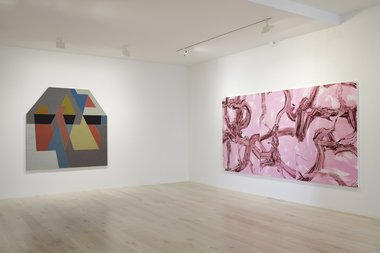
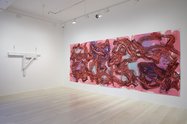



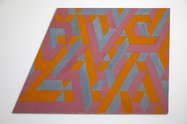
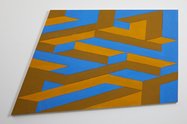
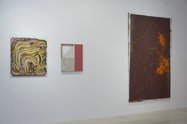

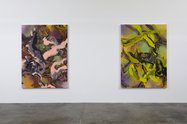


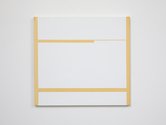
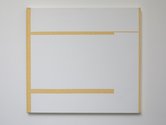
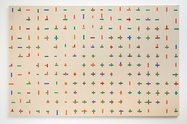



 Two Rooms presents a program of residencies and projects
Two Rooms presents a program of residencies and projects Advertising in this column
Advertising in this column



This Discussion has 0 comments.
Comment
Participate
Register to Participate.
Sign in
Sign in to an existing account.